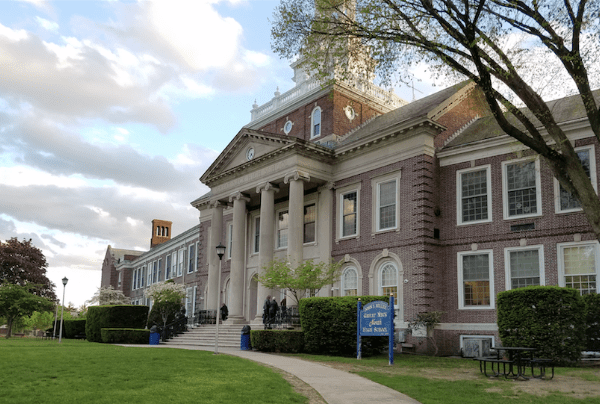
The Great Neck Board of Education adopted a nearly $282 million budget for the 2024-2025 school year, an increase of 3.62% from the district’s current budget.
“This is really a budget that allows us to preserve the standard of excellence that our community has learned to expect and deserves,” Superintendent Kenneth Bossert said.
The total budget amounts to $281,995,500. This decreased by nearly $4 million since the district’s previous draft budget of $285,916,013 was presented on March 26.
The decrease in expenditures is attributed to refining various expenditure areas but does not change staffing or programming, Assistant Superintendent of Business John O’Keefe said.
The nearly $282 million budget for 2024-2025 is increasing by $9,857,200 from the district’s current budget.
O’Keefe said that since inflation has diminished since last year, the budget percentage increase is lower than the current budget which increased by a little over 4% from the year prior.
The budget also includes a 3.26% tax levy increase, which falls within the allowable tax cap. A total of $236,985,206 in taxes is to be raised under the increased tax levy, which would fund about 84% of the district’s budget.
Bossert said that unlike other surrounding school districts, Great Neck has not been hit with such severe financial pressures.
While the district has had double-digit percentage increases in employee benefit costs in recent years, O’Keefe said this year it rose by just 3.92%.
The budget is split into seven categories, with all but one increasing from the current budget. This includes general support rising by about 4.24%, instruction – the largest expense – rising by 3.62% at $144,731,636, and transportation increasing by 4.08%.
Highlights of the budget include the full replacement of 11 retiring educators without any staff cuts, preserving class sizes, maintaining programs, expanding bilingual counseling and support, investing in facility upgrades and expanding campus security.
“This budget will allow us to continue to grow and prosper and provide every opportunity for our students to meet with success,” Bossert said.
The district is estimated to receive $15,421,256 in state aid, which would be increasing by about 4.28%. Of that total state aid, about $9,145,139 is foundation aid. State aid constitutes about 4.5% of the district’s budgeted revenues.
O’Keefe said the state aid numbers are based on estimates as the state has not adopted its budget yet which would allocate these funds.
On Monday, the governor announced an agreement with the state legislature to reinstate the foundation aid hold harmless policy, which ensures school districts get the same amount or more in foundation aid from year to year. Since the budget has yet to be adopted, it is unknown what that change would look like.
The school budget is also funded by reserves and fund balances, which are both decreasing in use from the current budget.
About $8.9 million of reserves will be used to fund the budget, a 5.65% decrease, and $4.1 million of fund balance, a 1.81% decrease.
Reserves can only go toward funding specific budget items, which the district allocated this year to the workers’ compensation reserve, employee retirement system reserve, teacher retirement system reserve, employee benefit accrued liability reserve and unemployment reserve.
The district has gradually been diminishing its use of reserves over the two budgets and now in the upcoming one, which Board Vice President Grant Toch applauded O’Keefe for achieving.
“I know that’s not a small accomplishment,” Toch said. “I’d say particularly against the backdrop of inflation… thank you for placing us back on the path of sounder fiscal foundation, so thank you and your staff.”
The budget will face a community vote on May 21. Included on the ballot is a proposition to establish a new capital reserve fund, which would be a new reserve account to fund future capital expenditures over the next ten years. This comes at no cost to taxpayers.
The maximum contributions to the reserve are capped at $40 million, and annual contributions are capped at $8 million. The remaining funds from the district’s expiring reserve fund account established in 2015 would also go toward the new reserve fund if adopted by the voters.
If established, the use of those funds for specific projects would also need to be voted on by the community.
A budget hearing will be held on May 8 for further discussion on the budget before the vote.






